Taxonomy

The land iguanas in the Galápagos vary in morphology and coloration among different populations.[4] In addition to the relatively widespread and well-known Galapagos land iguana (C. subcristatus), there are two other species of Conolophus: the Galapagos pink land iguana (C. marthae) from northern Isabela Island and the Santa Fe land iguana (C. pallidus) from Santa Fe Island.[4][5] Based on mtDNA, the land iguanas and marine iguana diverged about 8–10 million years ago.[6][7] Within the land iguana genus, the oldest split based on mtDNA, about 5.7 million years old, is between C. subcristatus and C. marthae.[7][8] A more recent study that included both mtDNA and nuclear DNA indicates that the land iguanas split from the marine iguana about 4.5 million years ago, and among the land iguanas C. subcristatus and C. marthae split from each other about 1.5 million years ago.[9] The differentiation between the last two species, C. subcristatus and C. pallidus, is less clear and it has been questioned whether they are separate species.[4] Based on mtDNA and cytochrome b, they fall into three monophyletic groups: C. subcristatus of western islands (Isabela and Fernandina), C. subcristatus of central islands (Santa Cruz, Baltra and South Plaza) and C. pallidus. Although the exact pattern is uncertain, it is possible that C. pallidus is closer to one of the C. subcristatus groups than the two C. subcristatus groups are to each other.[8]
Its specific name subcristatus is derived from the Latin words sub meaning "lesser" and cristatus meaning "crested", and refers to the low crest of spines along the animal's back, which is not as tall as in most iguanas.
Anatomy and morphology
Charles Darwin described the Galapagos land iguana as "ugly animals, of a yellowish orange beneath, and of a brownish-red colour above: from their low facial angle they have a singularly stupid appearance."[10] The Galapagos land iguana grows to a length of 0.9 to 1.5 m (3–5 ft) with a body weight of up to 11 kg (25 lb), depending upon which island they are from.[11][12] Being cold-blooded, they absorb heat from the sun by basking on volcanic rock, and at night sleep in burrows to conserve their body heat.[11] These iguanas also enjoy a symbiotic relationship with birds; the birds remove parasites and ticks, providing relief to the iguanas and food for the birds.[2][13]
Diet and longevity
Feeding
Feeding on fallen cactus pads
the Galapagos land iguana has a 60to 69-year lifespan.[2][12]
Reproduction
Basking
On South Plaza Island, where the territories of marine iguanas and land iguanas overlap, the two sometimes interbreed, resulting in a hybrid iguana that shows a mixture of features from each species.[2] The most likely unions tend to be between male marine iguanas and female land iguanas. Despite their long separation time and their being two distinct species from different genera, the offspring are viable, although likely sterile.[2][4]
Population

It is estimated that between 5,000 and 10,000 land iguanas are found in the Galapagos.[2] These iguanas were so abundant on Santiago Island at one time that naturalist Charles Darwin remarked when it was called King James Island that "...when we were left at James, we could not for some time find a spot free from their burrows on which to pitch our single tent".[11][14] In the years since then, entire populations (including all the animals on Santiago Island) have been wiped out by introduced feral animals such as pigs, rats, cats, and dogs.[2][11]
Evolutionary history

Researchers theorize that Galapagos land iguanas and marine iguanas evolved from a common ancestor since arriving on the islands from South America, presumably by rafting.[15][16] The marine iguana diverged from the land iguana some 8 million years ago, which is older than any of the extant Galapagos islands.[6] It is therefore thought that the ancestral species inhabited parts of the volcanic archipelago that are now submerged. The two species remain mutually fertile in spite of being assigned to distinct genera, and they occasionally hybridize where their ranges overlap.
Recovery efforts
Male
Yellow land iguana at the Charles Darwin Research Station
Galapagos land iguana on North Seymour Island.
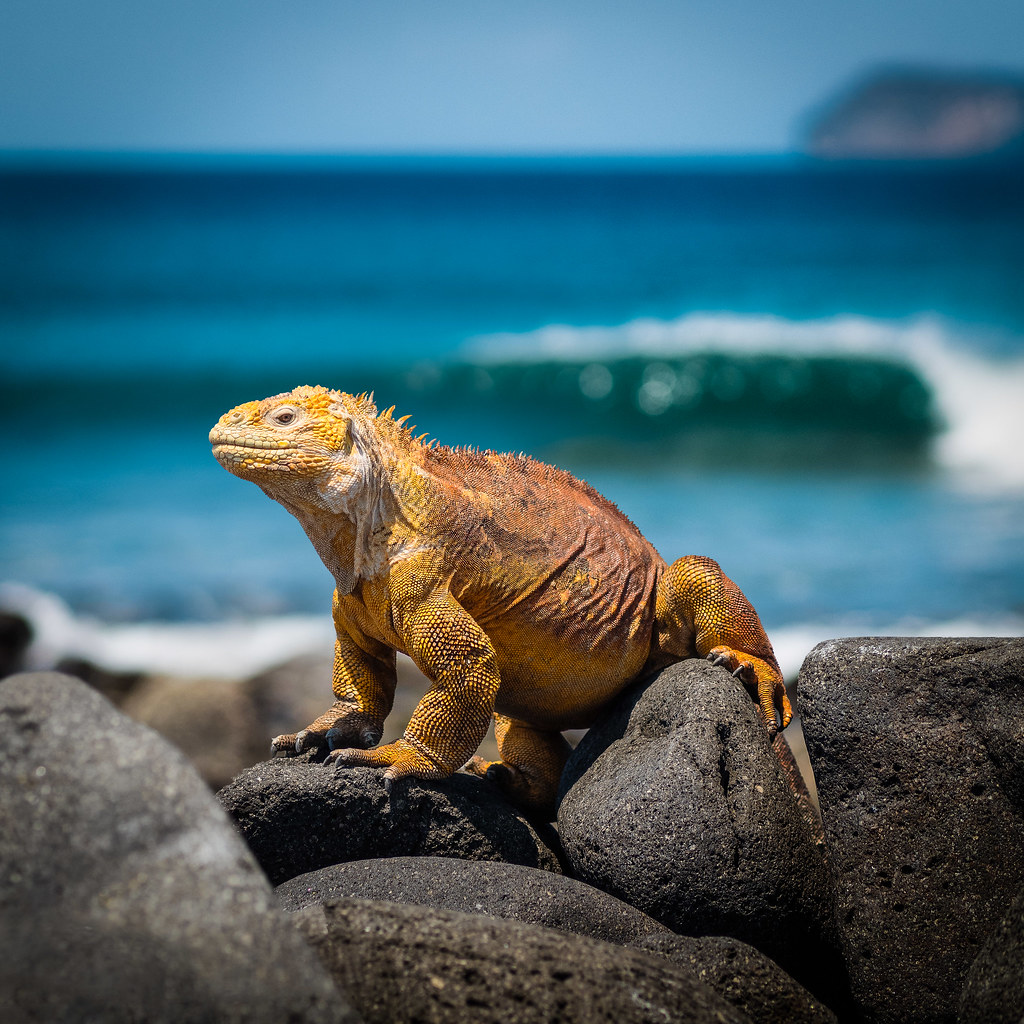

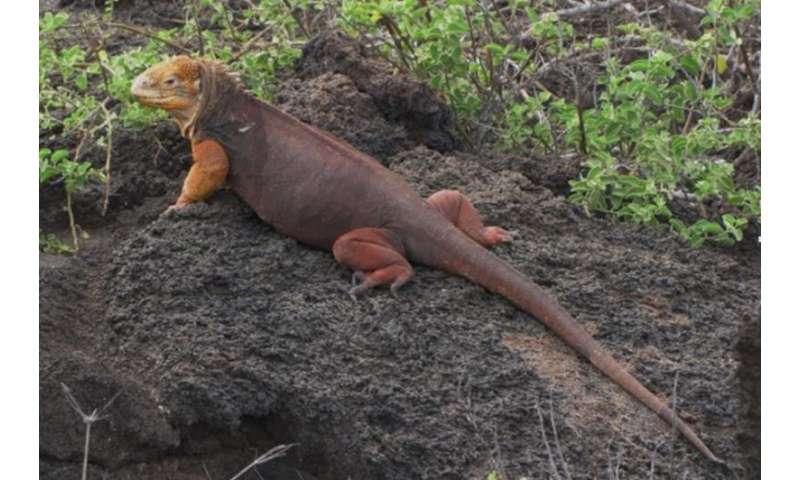


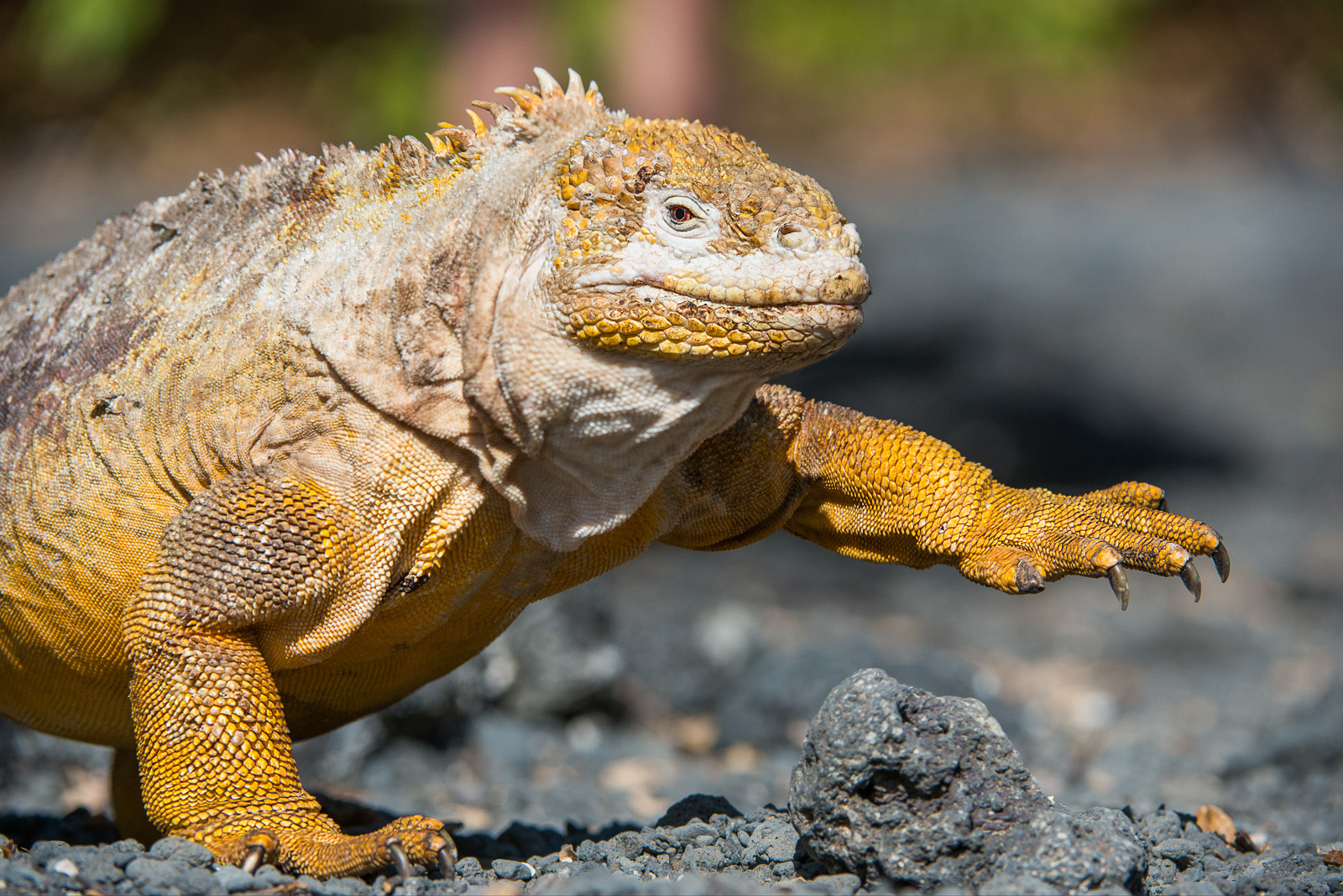

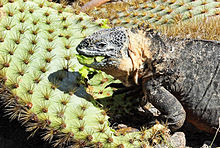

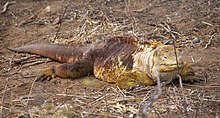

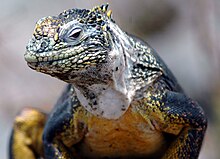
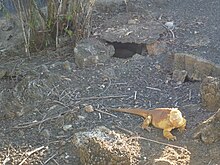

No comments:
Post a Comment
Note: Only a member of this blog may post a comment.